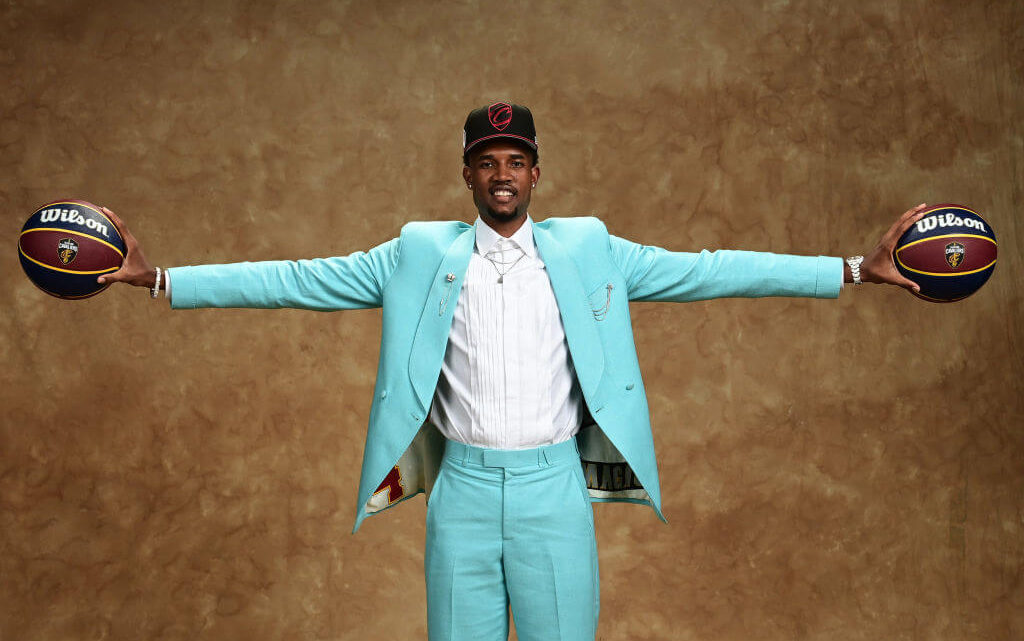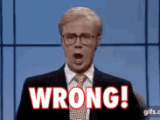
Grading the Cavs’ Off-season Part Two (or, The Mobley Curve)
2021-09-24Hello CtB!
With training camp a few days away and the start of the 2021-22 NBA season less than a month away, now seemed to be a good time to look back on the biggest moves of the Cavs’ offseason. Inspired by Evan Mobley, the “Mobley” curve is standard by which the offseason moves will be judged in this piece. With the fortunes of the Cleveland Cavaliers now riding on the franchise-changing player, it makes sense to view the offseason moves in terms of how they ensure the growth and success of the newly acquired USC product. If you haven’t caught the last podcast in which Nate Smith and Dani Socher do an excellent job of arguing the merits and demerits of the offseason, check it out! Without further ado…
Declined qualifying offer to Isaiah Hartenstein, Grade: B-
There’s an alternate world where the Cavs retain Hard Rock as a backup center on a very cheap deal, thus anointing Mobley immediately to the starting center position and officially resetting the Cavs’ timeline. However, it was not to be, as it appears clear that Hard Rock and his agent wanted to either secure more money or go to a more competitive situation, which was accomplished by his recent signing with the Clippers. It also shouldn’t go unmentioned that the Cavs did retain the better free agent center in Jarrett Allen. Nevertheless, one can’t help but wonder if the Cavs (and Mobley in particular) would’ve been better served by securing Hard Rock’s backup services and exploring a sign and trade with Allen that could’ve possibly brought in a sorely needed wing with upside to pair with Sexland and Mobley.
Drafting Evan Mobley with the third pick in the 2021 NBA draft, Grade: A
There’s not much that needs to be said about this, the Cavs took one of the most talented players with possibly the highest upside of any player in the draft. The only question that remains is whether they can put a team around him that will maximize his abilities.
Trading Taurean Prince for Ricky Rubio, Grade: B+
The Cavs got the better player in this trade (Rubio ranked #163 in EPM, Prince ranked #255), but they sacrificed one of their best volume three point shooters (Prince was 41.5% from three on 4.1 attempts per game) who was also arguably the best wing on the roster at that point in time, which is why the trade doesn’t get an A. But on the positive side, the Spaniard absolutely balled out in Tokyo at the Olympics against team USA and Olympic to NBA momentum is a real thing. Rubio brings a sorely needed playmaker to the Cavs’ backcourt with his elite passing and defense.
Signing Jarrett Allen to a five year, $100 million dollars, Grade: C+
Yes, the public consensus regarding this move is that Jarrett Allen is a good player on a tradable contract. In a vacuum and in a world without Mobley, this move would get a solid B grade. But examining this move in context to Mobley, the recent acquisition of another big man, Lauri Markkanen, and even the wider NBA landscape, then the picture becomes a little murkier.
Firstly with this signing, it largely confines Mobley to playing the forward positions for the foreseeable future. As CtB’s own Dani Socher pointed out in his excellent article, forcing Mobley to penetrate the paint off the dribble or shoot perimeter jumpers against quicker and more agile NBA power forwards will make his life a lot harder on offense than if he were to able to attack slower footed centers in the NBA.
Secondly, the Cavs decided to overpay Allen when comparing his contract to the wider NBA center free agent market. The Boston Celtics were able to sign Robert Williams III to a four year, $54 million dollar deal, who’s a superior player to Allen (Williams III ranked #39 in EPM, Allen ranked #112) at a far cheaper total cost.
Don’t be mistaken, all is not doom and gloom with the Allen signing. It’s possible a big fish that can be acquired (Ben Simmons perhaps?) or JA could take a leap in development and justify his top 50 contract. That would put this signing in a completely different light, as a building block to a long term plan. But until either of those things actually happen, it’s hard to say that this signing is compatible with a long term vision for the Cavs with Mobley as the centerpiece, pun intended.
Trading Larry Nance, Jr. for Lauri Markkanen, Grade: C-
The Cavs traded the better player (Nance’s EPM +0.3, ranked #152 in the NBA) on a more team-friendly contract ($10 million per year) for the worse player (Markkanen’s EPM -0.3, ranked #194 in the NBA) on a less team-friendly contract ($16.8 million per year). The question a few knowledgeable NBA fans had regarding this trade was, “Why didn’t Cleveland just try to sign Markannen with their non-taxpayer midlevel exception?” This appears to be a reasonable question based on Markkanen’s free agency circumstance, with every team capped out besides the Oklahoma City Thunder (according to Spotrac) and interest in Markkanen seemingly non-existent. At the very least, it appears that the Cavs did Markkanen and his agent a bit of a favor offering a top 90 contract, easily solid NBA starter money, in exchange for the three to four year commitment.
Adding another layer of perplexity to this move, the Plain Dealer’s Chris Fedor promptly reported after the announcement of the trade that Markkanen would “likely” be playing in a backup role. Such a declaration from the jump is bewildering, since Markkanen appears to be a good fit with his shooting alongside Sexland, Okoro, and Allen, has a lot NBA experience, and is being paid starter money. Markannen is also only 24 years old, in all likelihood, there’s still enough time for the big Finn to develop his game a little more… how is this development supposed to occur being relegated to backup minutes? If the Cavs have any intention of actually competing and winning, wouldn’t starting Markannen make more sense than the extremely raw rookie? Will Markkanen be satisfied and happy with such a role knowing there’s probably only one more chance at a big payday coming in his NBA career?
With all of these questions and concerns, how does this trade receive a passing grade? The answer: the Mobley Curve. Without question, trading for Lauri Markkanen is proof of concept in how to maximize the talents of a future point center Mobley. The basketball fit is close to ideal. Excitement for the move would probably be greater if had Cavs’ GM Koby Altman found a way to sign and trade Jarrett Allen, thus freeing up the frontcourt logjam created by the drafting of Mobley. Then there’s the nagging question of price, did the Cavs have to use their best trade asset or could the non-taxpayer MLE have sufficed?
Signing Kevin Pangos, 2 years, $3.48 million, Grade: B
Altman was determined to not go into the season without more options at the backup point guard position, and signing the former Gonzaga product looks like a decent move to solidify the third string PG position. Pangos is a knock down volume shooter (41.5% from three on 5.5 attempts per game in college), who’s developed better vision and passing (8.3 assists per 36 minutes in EuroLeague last season) while playing for Zenit Saint Petersburg.
Offseason Final Grade: B-
The Cavs got the most important decision of the offseason correct, they drafted Evan Mobley. It’s impossible to not consider this offseason a success because of it. Also looking back, the best and possibly most underrated move of the offseason, outside of drafting Mobley, was acquiring Ricky Rubio. The Cavs paid a premium, but they now have two legitimate options to run the team’s offense in Darius Garland and Rubio.
But the two other big time moves are harder to justify albeit for different reasons. There is a legitimate question about fit with Jarrett Allen and Mobley. There’s also a legitimate question about Allen’s on court effectiveness given the fact the Cavs were pathetic defensively (115.2 defensive rating) last season while Allen was on the floor. Allen posted the second worst net rating (-9.1) among Cavs’ starters, only besting Collin Sexton. $100 million should demand better performance.
With Lauri Markkanen, the fit is perfectly fine. The questions are whether the price was worth it (using their best trade asset and a player in Larry Nance, Jr. who was beloved by the fans), and whether or not Markannen’s best role is being a backup to Mobley, instead of playing alongside Mobley, or Allen for that matter. Given the price and what is known about Markkanen’s role, it’s hard to understand why Markkanen isn’t being considered for a starting job and even harder to understand why he’s not being paired up with Mobley (or Allen).
What Do You Think?
Sound off Commentariat below, what do you think of the Cavs offseason? What grade would you give them?



Decent rationale for a B- grade, but I can’t give it higher than C+. In a modern game dominated by wings, the Cavs entered the off-season without a true 3, and exit the off-season having added nothing.
Another year of painful development and many losses.
hey thanks for checking it out grover13!!! yup, can’t argue with that, if I didn’t weigh the decisions equally, I would’ve definitely given them a lower grade!
GREAT WEEKEND FOR OHIO SPORTS –(FOOTBALL )—–…” MORE BEER PLEASE “
WHO DEY BABYYY!!!!! F*** THE STEELERS!!!
HaHa!
Most of my cronies went to Cleveland for the game. I checked out both games in a bar that Joey’s parents frequent.
Excellent review! There still is the need this offseason for another wing. Especially one that can play multiple positions with the length & strength; something like a Nance Jr. type of player. Since this wing would be backup I’d start with putting the focus on length & athleticism, such as — Paul Reed (76ers) who when he has gotten minutes (college, g league & summer league) collects steals, blocks & rebounds. Other options being Jalen McDaniels (Hornets), KZ Okpala (Heat) with even a stretch looking at Chimezie Metu (Kings). If the focus is on skills & strength — Naji Marshall (Pelicans), Danuel House (Rockets),… Read more »
Appreciate you reading DaveR!!! You bring up a great point, I do think (and hope) we may see some Mobley at the 3 minutes. I think it helps Mobley on offense in three ways. First I think he’ll get some open 3s to shoot, and I think he’s a marginally better shooter than Okoro coming out of college. Secondly, I think he’ll have an easier time posting up smaller 3s for easy baskets or to draw double teams to kick out. Thirdly, he definitely likes operating on the perimeter, so it’s a way to get him comfortable immediately as a… Read more »
I don’t get the fit. So many bigs. So many pg sized players. 4 now with Rubio and Pangos. Three total wings with Okoro, Osman, Stevens, and Okoro is too short to guard many 3s. Just bizarre roster construction all around.
Sorry 4 wings. Forgot about Windler who probably won’t play more than 30% of the season. Valentine more of a point sized player. Thomas probably won’t play much. Wade is more of a stretch 4.
Yup, agree John B… honestly think Windler and Stevens are the two best current wing options on the roster and Windler can’t stay healthy and Stevens can’t shoot 3s.
If Cedi finds his jumper and Okoro takes a leap in development, things should look better?
But one thing’s for sure, Koby did not bring in any competition for that spot… he’s 100% banking on Okoro and Windler (IMO) to hold it down.
He’s a gambler then.
And/or a tank commander!!! LMFAOOO
Don’t forget there is no point in trying to contend this year (unless the proposed Ben for Love + 3 #1’s happens), so it is all about assembling assets and gaining experience for the youngsters. An easy way to tank while developing guards and bigs is to have no wings.
At some point you have to switch from accumulating assets to identifying ones to keep or add for building to compete. I always feel that unless you draft a generational player who can take you from immediate cellar to competing for a playoff seed you need to start trying to build a more competitive team and teaching good habits with every successive year after the first year. Otherwise I feel like you stunt the development of players, at least as far as being winning players and net positive impact guys. I don’t think treading water nets you an eventual competitor… Read more »
Well said John B… I think there are “tank” years where you pick and choose, but “the Process” seems to have been proven to be a fail.
25-27 wins.. 65%.. 29-33 wins 25%.. 21-23 wins.. 10% (kolby and his dolls take their talents to vegas).. not sure which outcome to prefer..
Unfortunately, tanking again seems to be the order of the day. DG and Okoro would have to take massive leaps and Mobley would have to be generational… that would finally change the ball game.
Good work, Good analysis. I’m going B or B+. The team obviously has more potential than before — we will see how it works out, could go either way. Might quibble on two grades: I would move Jarrett Allen grade up to at least B-. The team needs more talent to play or trade. That money will look like peanuts in three years. Nance / Markkanen at least a B: We love LNJ, but he wanted to go, is several years older, is injury prone, has serious health concerns, and is unlikely to be very good by the time the… Read more »
Thanks for reading as always Raoul!!! Right on, I could definitely see what you’re saying, I also heard rumors of a massive cap spike and it sounds unlikely they’re will be any smoothing either.
GREAT JOB –(AGAIN ) CLF—–MAYBE IT HAS BEEN…….”TOO MANY MORE BEER PLEASE ” ……GOING TO STICK MY NECK OUT AND SAY BY THE END OF THE YEAR THE LNJ– ( I LOVE THE GUY TO DEATH )—-LAURI TRADE WILL LOOK AS A POSITIVE FOR THE CAVS –JUST THINK LAURI IS READY FOR A REBOUND SEASON ——–WILL BE IN NC IN ABOUT 10 DAYS CLF —–BLACK MOUNTAIN // ASHVILLE —GIVE ME SOME SITES TO SEE —ALREADY BOOKED FOR THE BILTMORE TOUR AND OF COURSE MY SPECIALITY … ” THE CRAFT BREWERIES ” !!!
I love the Lauri positivity… he could be really fun if he’s up to the challenge and they give him a chance to shine!
And hell yeah on the NC trip!!! Going to interrogate the girlfriend to find out what the good sites are! LMFAOOOO
Thanks for the content, good read. I hope the grade here is incomplete and we find a way to get Simmons (Sexton, Okoro Love & Picks looks better every day). Despite his warts, a Simmons / Garland / Mobley trio feels like a real young core (God I hate that term). Was 100% anti Nance trade, but coming around to the idea (dreaming) that Markannen could be like a Ryan Anderson-type flame thrower. If this is the team they roll with for the majority of the season, have to say C- * do they get credit for getting lucky in… Read more »
Thanks for reading Rob I appreciate it!!!
There is definitely still Simmons talk, and something I didn’t include in this piece was Chris Fedor’s hinting at the possibility of moving Rubio now that he’s trade eligible.
I’d also give the offseason a C- grading on the Mobley Curve LMFAOOO, I 100% agree with you… I just went with a simple average here in this piece for fun and for thought… but outside of Mobley, there’s definitely legitimate concerns right from the jump about how they are managing this.
Those who blamed them for being unlucky in the past gotta give credit for being lucky this time.
Good piece and nice analysis. I will go D.
I think we are worse than last year. Overpaid for Allen. Overpaid for Markannen. Sold their best trade asset and best 2 way player for a guy they could have signed as a FA since no one else wanted him.
SexLand is still a thing. Love is still here. We have the worst shooting frontcourt in the league (Okoro, Mobley, Allen). And we got WORSE on the wing. Only the Mobley pick & Rubio deal save it from an F. I will go under 20 on wins.
Appreciate it as always Jason!!!
Damn you brought the heat LMFAOOOO!!!! I’m not going to argue against it because there’s a very real chance what you said is what happens… and I’d have to imagine Koby’s gone in that scenario but knows…
For me, my grades would be:
A: Got a lot better
B: Got a little better
C: About the same
D: Got a bit worse
F: Got a lot worse
We are worse, short term in my view. Gotta be a D. Maybe if Mobley is better quicker than I think, Garland/Okoro/Sexton all make strides, and Markannen/Love are not the least productive 50 million dollar backups in the league….but I doubt it.
Kolby will rescue the F by trading Garland, Okoro, and Rubio + 2 unprotected firsts for Simmons at the deadline.
LMFAOOOOOO you’re on fire!!!
yeah, I mean you ain’t wrong…. the whole offseason was saved by drafting Mobley, but outside that are a lot of questions.